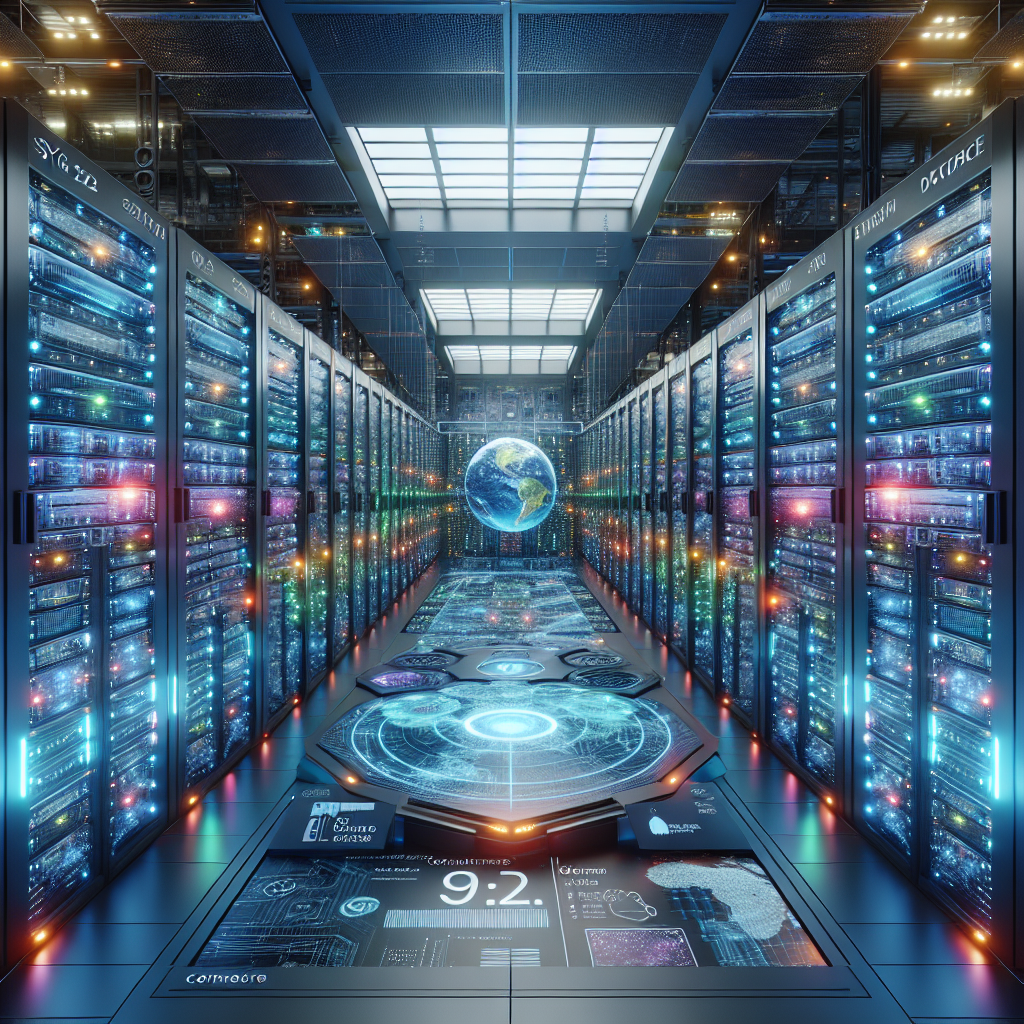International AI Press Digest – August 8, 2025: GPT-5 Debuts, Microsoft Dominates, and Job Displacement Concerns Emerge
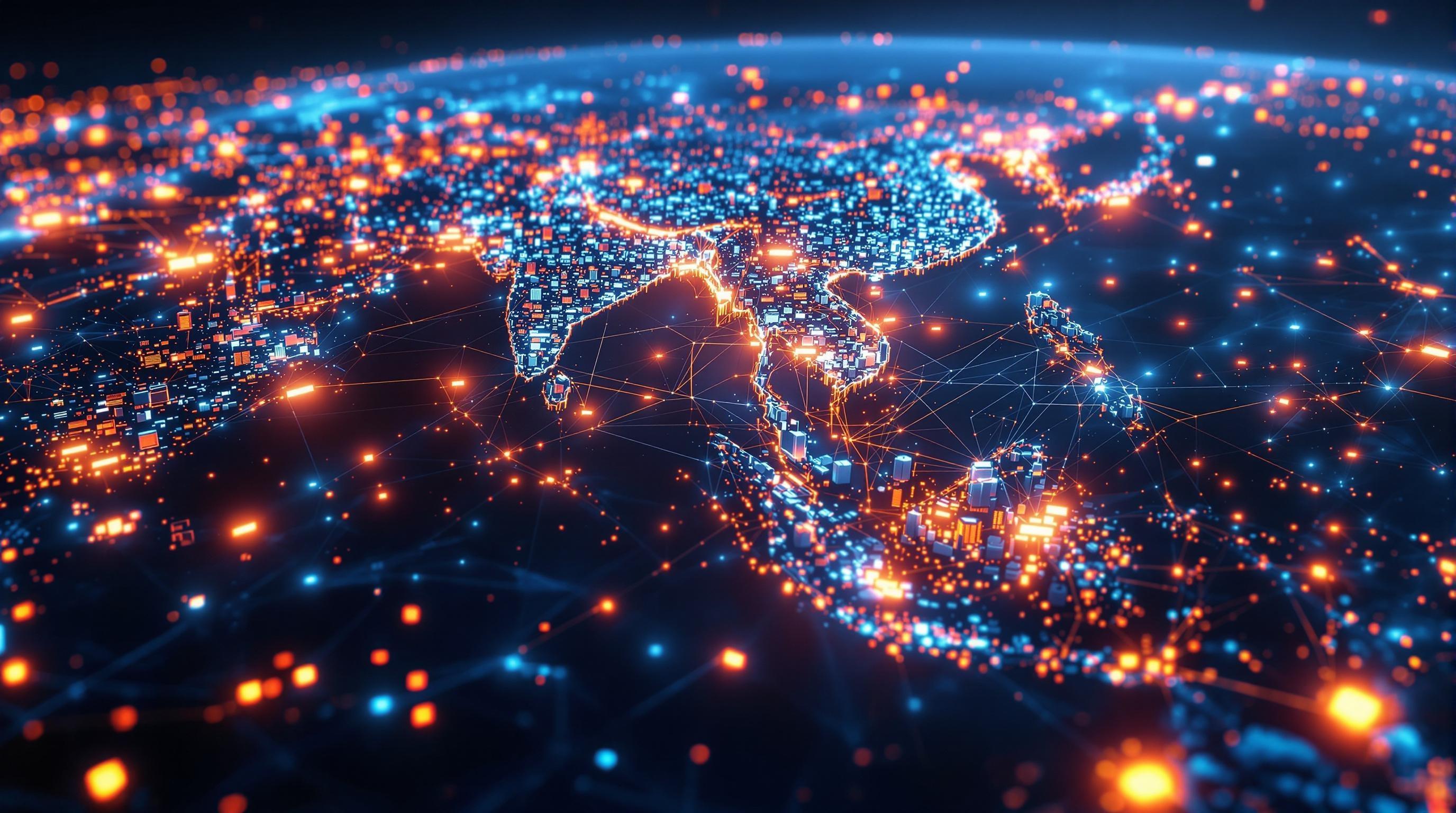
GPT-5 is here, and it's a game-changer: OpenAI's new unified multimodal AI model is set to redefine benchmarks across industries, offering unprecedented problem-solving capabilities. Unlock new levels of automation and productivity by understanding how GPT-5 can execute complex tasks autonomously. Start exploring its potential today to stay ahead of the curve.
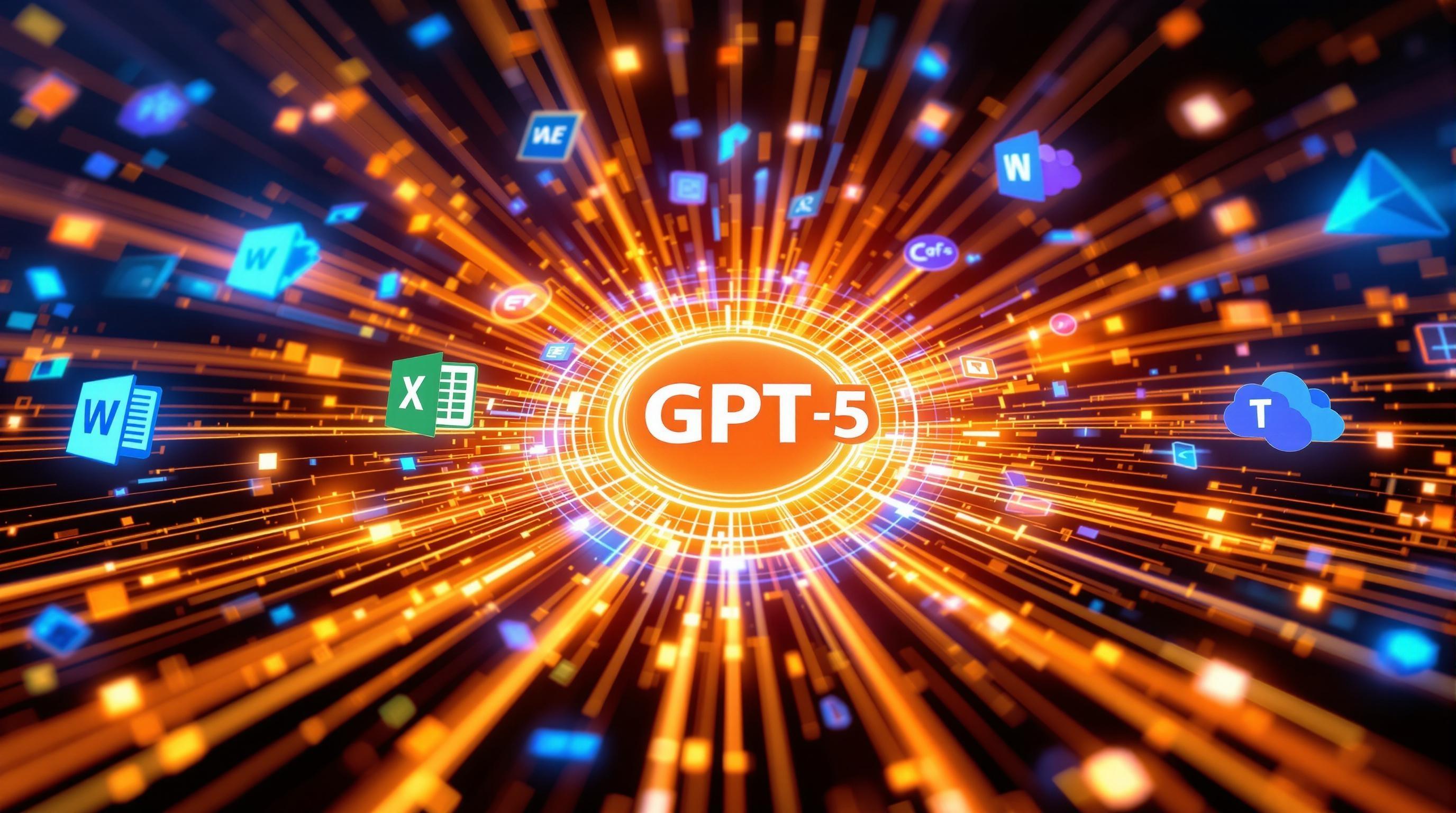
GPT-5 Arrives: OpenAI's New AI Model Redefines Capabilities
The AI landscape just shifted seismically with the arrival of GPT-5, OpenAI's latest and most ambitious AI model. Forget incremental upgrades; this is a leap. GPT-5 isn't just an iteration; it's a reimagining of what AI can achieve. OpenAI has unleashed a unified multimodal AI model that's poised to redefine benchmarks across industries.
A Unified Multimodal Marvel
What exactly does "unified multimodal" mean? Think of it as an AI Swiss Army knife. GPT-5 seamlessly integrates and processes various data types – text, images, audio, video – allowing it to understand and respond to complex prompts with unprecedented accuracy. Need it to analyze a financial report, generate a marketing campaign, and then create a short explainer video? GPT-5 can handle it all within a single workflow. It's not just about doing more; it's about doing it all together, creating a synergy that unlocks new levels of creativity and problem-solving.
Excelling in STEM: Math and Coding Prowess
GPT-5 isn't just a creative powerhouse; it's a STEM whiz too. Early benchmarks reveal a significant leap in mathematical and coding capabilities. Imagine needing to debug a complex piece of software. Where ChatGPT, OpenAI's previous flagship model, might struggle, GPT-5 can dissect the code, identify the error, and even suggest optimal solutions. This makes it an invaluable tool for developers, researchers, and anyone who relies on data-driven decision-making.
Here's a glimpse of GPT-5's capabilities in STEM:
Advanced Calculus: Handles complex equations with ease.
Algorithm Design: Creates efficient and optimized algorithms.
Code Generation: Writes clean and functional code in multiple languages.
Data Analysis: Identifies patterns and insights from large datasets.
Hallucination Reduction: A Step Towards Reliability
One of the biggest challenges with large language models (LLMs) has been their tendency to "hallucinate" – confidently presenting false or misleading information. GPT-5 tackles this head-on with significant improvements in factuality and coherence. While no AI is perfect, GPT-5's refined architecture and training data have demonstrably reduced the frequency and severity of hallucinations compared to GPT-4. This makes it a more reliable tool for critical applications where accuracy is paramount. Think of it like this: if GPT-4 occasionally told tall tales, GPT-5 sticks closer to the verifiable truth.
The AGI Horizon: A Glimpse into the Future
GPT-5's arrival fuels the ongoing debate about Artificial General Intelligence (AGI). While OpenAI remains cautious about labeling GPT-5 as AGI, its enhanced capabilities undeniably push the boundaries of what AI can achieve. Its multimodal nature, combined with its advanced reasoning and problem-solving skills, hints at a future where AI can truly understand and interact with the world in a human-like way. While AGI remains a theoretical construct, each advancement like GPT-5 brings us closer to that potentially transformative reality.
From Assistant to Executor: Autonomous Task Completion
Perhaps the most revolutionary aspect of GPT-5 is its ability to transform from a passive assistant to an active task executor. Instead of simply providing information or generating text, GPT-5 can autonomously execute complex tasks, leveraging its understanding of various tools and APIs. Imagine instructing GPT-5 to "research the top 5 competitors in the electric vehicle market, analyze their marketing strategies, and create a SWOT analysis." GPT-5 can now independently perform these steps, gathering data, synthesizing information, and presenting a comprehensive report – all without constant human intervention. This paradigm shift has the potential to dramatically increase productivity and unlock new levels of automation across industries. Tools like AutoGPT hint at this future, but GPT-5 takes it to a whole new level.
GPT-5 represents a significant leap forward in AI capabilities, blurring the lines between assistance and autonomy and sparking debate about the trajectory of AI development. As we continue to explore its potential, one thing is clear: the age of truly intelligent machines is rapidly approaching. The next section will explore Microsoft's growing dominance in the AI landscape.
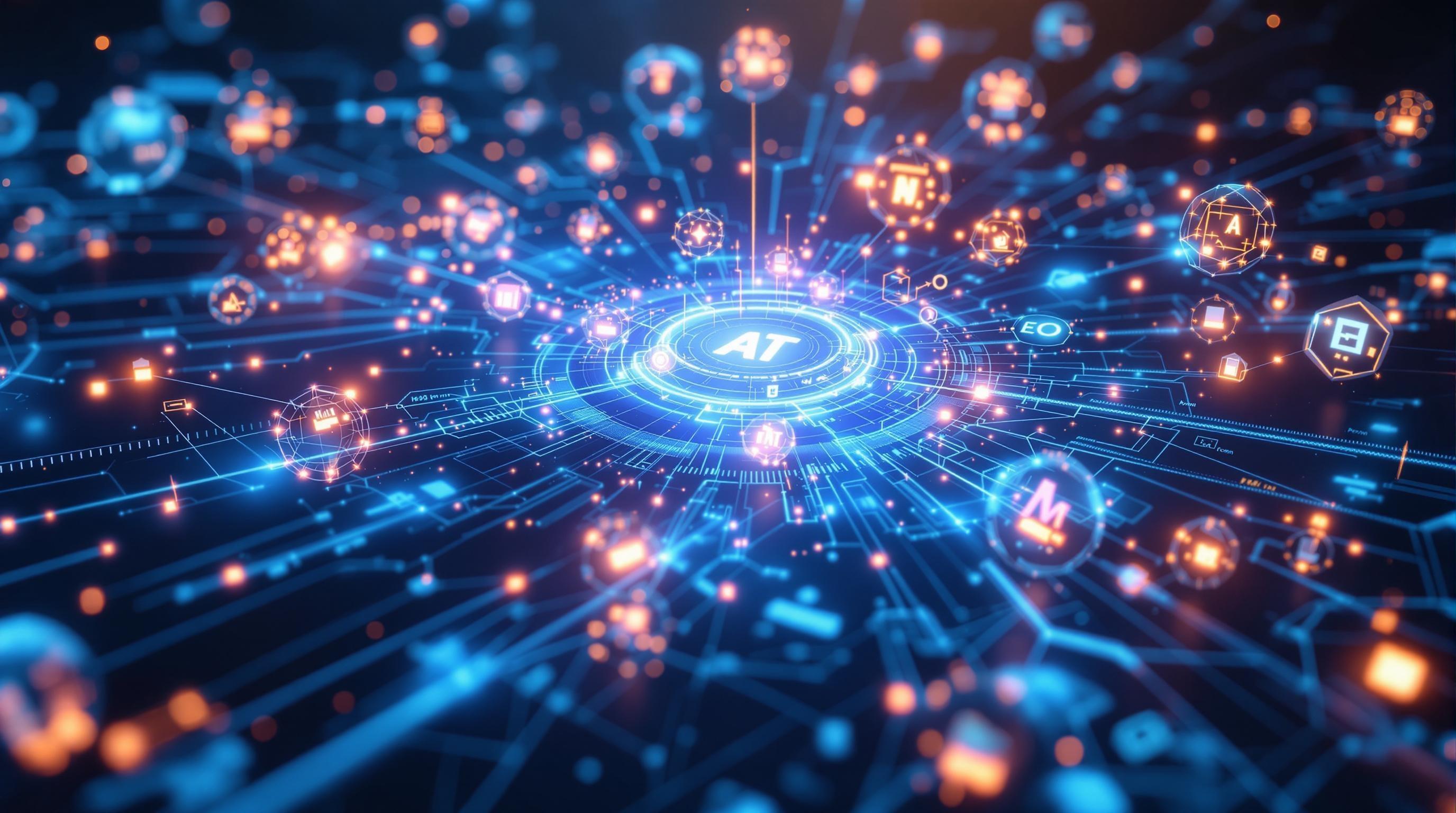
Microsoft's Swift GPT-5 Integration: Dominating the Enterprise AI Landscape
The AI landscape has irrevocably changed, and Microsoft isn't just keeping pace—it's setting the tempo. Their swift and comprehensive integration of GPT-5 across their suite of products has firmly established them as a dominant force in the enterprise AI arena.
GPT-5 Everywhere: A Platform-Wide Transformation
Microsoft's strategy is clear: infuse every corner of their ecosystem with the power of GPT-5. This isn't a limited rollout; it's a full-scale deployment designed to impact millions of users across diverse professional domains. Consider these key integrations:
Microsoft Copilot: Microsoft Copilot, your AI companion across Windows 11 and beyond, now boasts enhanced reasoning, creative capabilities, and a deeper understanding of user context thanks to GPT-5. Imagine brainstorming sessions that feel truly collaborative, with Copilot offering insightful suggestions and accelerating idea generation.
Microsoft 365: The productivity powerhouse that is Microsoft 365 is now even more potent. GPT-5 elevates writing in Word, data analysis in Excel, presentations in PowerPoint, and email management in Outlook. Features like automated summarization, intelligent content suggestions, and real-time grammar refinement are now even more sophisticated. For instance, imagine drafting a complex financial report in Excel and having GPT-5 automatically generate a concise executive summary ready for presentation.
GitHub Copilot: Developers, brace yourselves. GitHub Copilot, the AI pair programmer, takes a quantum leap forward with GPT-5. Expect more accurate code completion, smarter bug detection, and enhanced code generation capabilities. Complex coding tasks that once took hours can now be accomplished in minutes. It’s like having a senior developer looking over your shoulder, providing guidance and insights every step of the way.
Azure AI Foundry: Microsoft is empowering businesses to build their own AI solutions with Azure AI Foundry. GPT-5 integration means developers have access to the most advanced LLM for building custom applications, chatbots, and AI-powered services. This lowers the barrier to entry for AI adoption, enabling businesses of all sizes to harness the transformative power of AI.
'Smart Mode': Choosing the Right GPT-5 Flavor
To optimize performance and manage costs, Microsoft introduced "Smart Mode." This intelligent system automatically selects the most appropriate GPT-5 variant based on the task at hand. Think of it like this: you wouldn't use a sledgehammer to crack a nut. Similarly, Smart Mode ensures that you're not using the most powerful (and expensive) GPT-5 model for simple tasks like grammar checking. This dynamic allocation of resources ensures efficiency and affordability.
Smart Mode is like having a team of AI experts constantly optimizing your AI usage in the background.
Cementing the Enterprise AI Lead
Microsoft's rapid deployment of GPT-5 is not just about keeping up; it's about establishing a clear lead in the enterprise AI landscape. By seamlessly integrating GPT-5 across its existing platforms, Microsoft has delivered immediate value to its vast user base, stealing a march on competitors who are still experimenting with fragmented AI solutions.
A Productivity Explosion
The integration of GPT-5 translates to a tangible boost in productivity for millions of users. Imagine marketers generating high-quality ad copy in minutes, engineers debugging complex code with ease, and analysts extracting insights from massive datasets at unprecedented speed. The promise of AI-powered productivity is no longer a futuristic vision; it's the reality of today, thanks to Microsoft's GPT-5 integration.
This rapid and widespread deployment of GPT-5 solidifies Microsoft's position at the forefront of the AI revolution. As users experience the tangible benefits of these integrations, expect even greater demand for AI-powered tools and services, further cementing Microsoft's dominance in the enterprise AI landscape. The focus now shifts to the impact of this widespread adoption on job roles and the economy.

Microsoft Poaches DeepMind Talent: A Bold Move in the AI Assistant Race
The AI talent war is heating up, and Microsoft just made a very strategic play. Word on the street is that they've successfully poached several key figures from Google's DeepMind, signaling a major power shift in the race to develop the next generation of AI assistants.
A High-Profile Acquisition: Suleyman Joins the Ranks
At the forefront of this talent acquisition is none other than Mustafa Suleyman, a co-founder of DeepMind. This is a huge win for Microsoft. Suleyman's expertise and vision are invaluable, especially as Microsoft doubles down on its AI ambitions. Beyond Suleyman, a team of engineers and researchers are rumored to be making the jump as well, further bolstering Microsoft’s AI capabilities. Imagine assembling an all-star team, ready to redefine what's possible with AI – that's the kind of impact this move could have.
The Allure of an Entrepreneurial Ecosystem
So, why would top talent leave a powerhouse like DeepMind? The whispers suggest that Microsoft is offering something incredibly appealing: a more agile, entrepreneurial culture. DeepMind, while a leader in AI research, has grown into a large organization. Microsoft seems to be selling a vision of a smaller, more nimble team where individuals can have a more direct impact and ownership over their projects. It’s the classic David vs. Goliath scenario, but with AI algorithms instead of slingshots. This environment might allow for quicker iteration and innovation, particularly attractive to those who thrive in a fast-paced setting.
Building the AI Assistants of Tomorrow
Microsoft's clear objective with this acquisition is to accelerate the development of advanced AI assistants. Think beyond the current capabilities of tools like Microsoft Copilot; they're aiming for AI that is more intuitive, personalized, and seamlessly integrated into our daily lives. This isn't just about adding features; it's about reimagining how we interact with technology. The new team is expected to focus on creating AI that can truly understand user needs, anticipate requests, and provide proactive assistance.
Consumer AI: A Microsoft Priority
This talent influx could significantly accelerate Microsoft's push into the consumer AI space. While they already have a strong presence in enterprise solutions, the consumer market represents a massive opportunity. By bringing in experts with a deep understanding of AI assistants, Microsoft is signaling its intent to compete head-on with Google, Apple, and other major players in the consumer AI arena. We might see a surge of innovative AI-powered features integrated into Windows, Office 365, and other popular Microsoft products.
Google's Loss: A Potential Research Setback?
Naturally, this talent exodus raises questions about the potential impact on Google's foundational AI research. DeepMind has been at the forefront of some of the most groundbreaking AI advancements in recent years, including DeepMind AlphaFold, a revolutionary AI system that predicts protein structures. Losing key researchers and engineers could slow down their progress in these critical areas. The
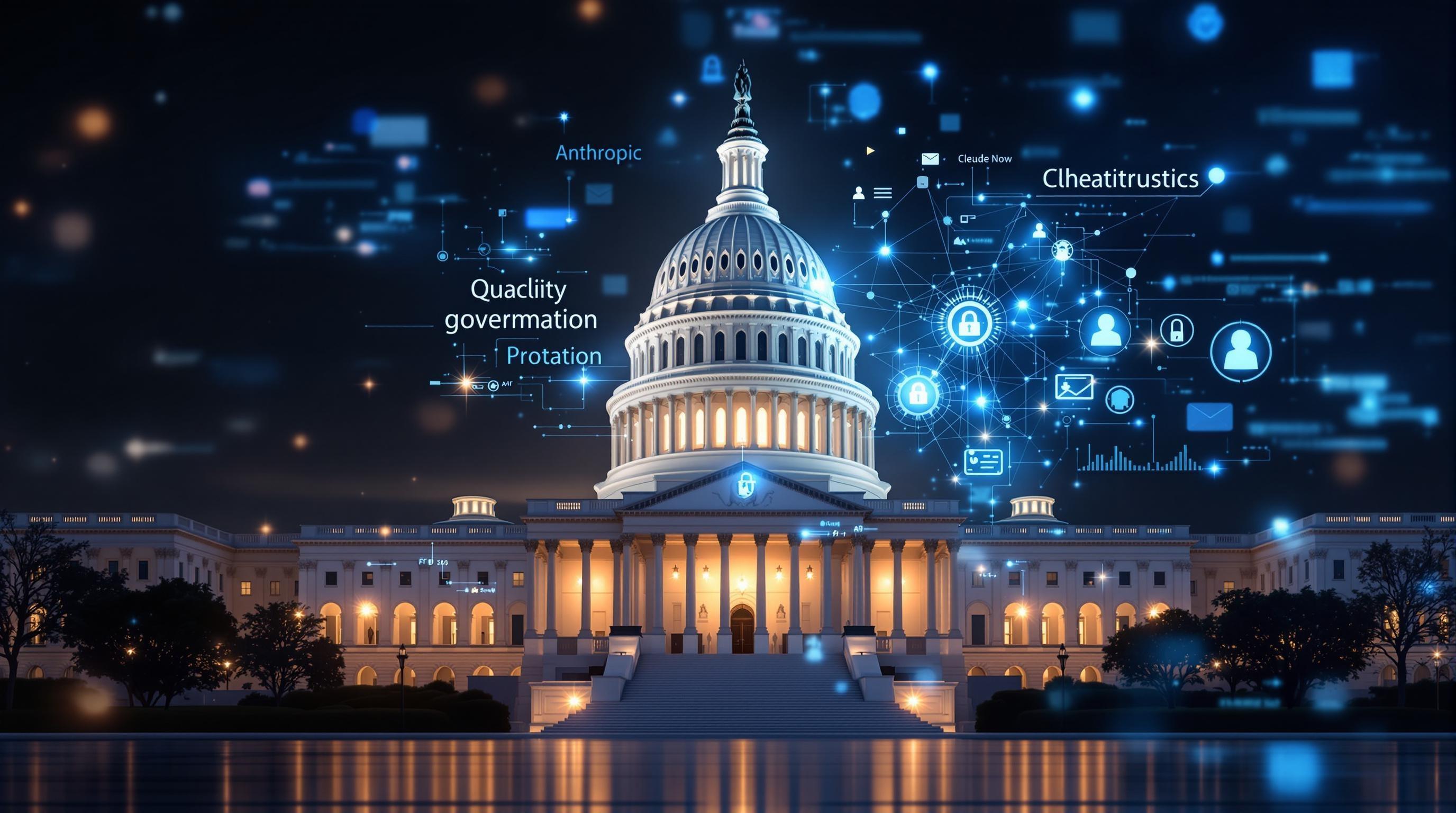
AI-Driven Job Cuts Surge: The Growing Impact on the US Labor Market
The promise of AI bringing unprecedented productivity is increasingly tempered by a harsh reality: job displacement.
AI-Fueled Layoffs: A Troubling Trend
In 2025, the adoption of AI is no longer a futuristic concept; it's a present-day force reshaping the US labor market, and not always for the better. A stark indicator of this shift is the link between AI implementation and significant job losses. Reports indicate that over 10,000 US workers have been laid off directly due to companies integrating AI solutions into their operations. From automating routine tasks to augmenting creative workflows, AI's expanding capabilities are leading organizations to restructure their workforce, often resulting in painful cuts. Think of it like this: if a company can use DeepSeek, a powerful AI model, to handle customer service inquiries that previously required a team of human agents, it directly impacts employment numbers. This isn't just about replacing low-skill jobs; AI is now capable of handling tasks across various skill levels and industries, further exacerbating the issue.
The 'Tech Update' Euphemism
The situation is likely even more severe than the direct layoff numbers suggest. Many companies are masking AI-related job cuts under the guise of 'tech updates' or 'restructuring.' This makes it difficult to precisely quantify the true extent of AI's impact. However, even with this lack of transparency, over 20,000 additional roles have been reportedly eliminated through these 'tech updates,' hinting that AI is a silent driver behind these decisions. It's similar to how streaming services quietly retire older content; the end result is the same, even if the motivation isn't explicitly stated. This indirect displacement requires a deeper analysis to truly understand the scope of AI's influence on the job market.
July's Shocking Surge
The speed at which AI is disrupting the labor market is also increasing. A recent report revealed a staggering 140% surge in job displacement in July alone. This exponential growth underscores the urgency of addressing the challenges posed by AI-driven automation. It's as if the AI revolution has suddenly accelerated from a leisurely stroll to a full sprint, leaving many workers struggling to keep pace. While tools like GitHub Copilot, an AI pair programmer, empower developers, they also change the skillset needed and the number of developers required for some tasks.
Productivity Gains, Employment Losses
Economists estimate that AI-driven productivity gains could result in 300,000–500,000 fewer jobs. While increased productivity is generally seen as a positive economic indicator, the concentration of these gains among a select few companies and individuals raises serious concerns about inequality. It's a paradox: we become more efficient, yet a significant portion of the population finds itself unemployed or underemployed. This situation calls for innovative solutions, such as retraining programs and policies to ensure that the benefits of AI are shared more equitably. Resources like the AI News section can keep you updated on the latest trends and potential solutions.
The Widening Gap
Ultimately, the growing adoption of AI has profound implications for labor markets and income inequality. As AI takes over more tasks, the demand for human labor may decline, especially for routine and easily automated jobs. This can lead to lower wages and fewer opportunities for those without the skills to adapt to the changing landscape. The situation risks creating a two-tiered society: those who can leverage AI to enhance their productivity and those who are left behind. Addressing this challenge requires a multi-faceted approach, including investing in education and training, promoting policies that support workers in transition, and exploring new models of economic organization that distribute the benefits of AI more broadly. Understanding AI Fundamentals is now more critical than ever for navigating this changing landscape.

NTT's Multi-Agent AI Breakthrough: Revolutionizing Enterprise Collaboration
Imagine a world where AI agents seamlessly collaborate to solve complex business problems, much like a team of human experts working together. That's the promise of NTT's groundbreaking multi-agent AI platform, poised to revolutionize enterprise collaboration.
Unveiling NTT's Multi-Agent AI Platform
NTT, a global technology powerhouse, has recently unveiled a cutting-edge multi-agent AI platform designed to foster collaboration among AI agents. This platform is not just another AI tool; it's an ecosystem where AI agents can interact, learn from each other, and collectively tackle intricate tasks that would be impossible for a single AI to handle. Think of it as building a super-powered team of AI specialists, each with unique skills, all working in sync to achieve a common goal. For example, you could use a tool like AutoGPT, an experimental open-source AI agent, to automate parts of this workflow by chaining together LLM “thoughts” to achieve whatever goal you set.
Launching the Smart AI Agent Ecosystem
NTT's vision extends beyond just a platform; they're launching a "Smart AI Agent Ecosystem." This ecosystem already boasts hundreds of deployments, demonstrating the platform's real-world applicability and the eagerness of businesses to embrace collaborative AI. These aren't just pilot projects; they're full-scale implementations transforming how organizations operate. The rapid adoption suggests a significant shift in how enterprises view and utilize AI, moving from isolated applications to integrated, collaborative systems.
Transforming Industries: Healthcare, Manufacturing, and Finance
The applications of NTT's multi-agent AI platform span diverse industries, highlighting its versatility and potential for broad impact:
Healthcare: Imagine AI agents assisting doctors in diagnosing diseases by analyzing medical images, patient history, and the latest research, all in real-time. This could lead to faster, more accurate diagnoses and personalized treatment plans.
Manufacturing: Consider AI agents optimizing supply chains, predicting equipment failures, and coordinating production schedules to minimize waste and maximize efficiency. The N8N, a workflow automation tool, could be integrated to further streamline these manufacturing processes.
Finance: Envision AI agents detecting fraudulent transactions, assessing investment risks, and providing personalized financial advice to customers, enhancing security and improving customer experiences. You can compare this to the capabilities of a tool like Thomson Reuters, which provides comprehensive financial data and analysis. The key difference, however, is NTT's agents would perform tasks autonomously using that data.
Scalable, Autonomous Agent Networks for Enterprise Workflows
One of the platform's key strengths is its ability to create scalable, autonomous agent networks. This means that the system can handle increasing workloads and complexities without requiring constant human intervention. The agents can learn and adapt over time, continuously improving their performance and decision-making abilities. This is crucial for large enterprises with complex workflows and a need for efficient, reliable AI solutions.
Revolutionizing Decision-Making Processes
Ultimately, NTT's multi-agent AI platform promises to revolutionize decision-making processes within organizations. By providing access to more comprehensive data, diverse perspectives, and advanced analytical capabilities, the platform empowers businesses to make more informed, data-driven decisions. This leads to improved efficiency, reduced costs, and increased competitiveness. It's about moving beyond gut feelings and intuition to a world where decisions are grounded in solid evidence and AI-powered insights.
As businesses grapple with ever-increasing complexity and data overload, collaborative AI platforms like NTT's offer a compelling solution. By harnessing the collective intelligence of AI agents, organizations can unlock new levels of efficiency, innovation, and competitive advantage. Keeping up with the latest developments in AI News will be crucial for businesses looking to leverage these advancements.
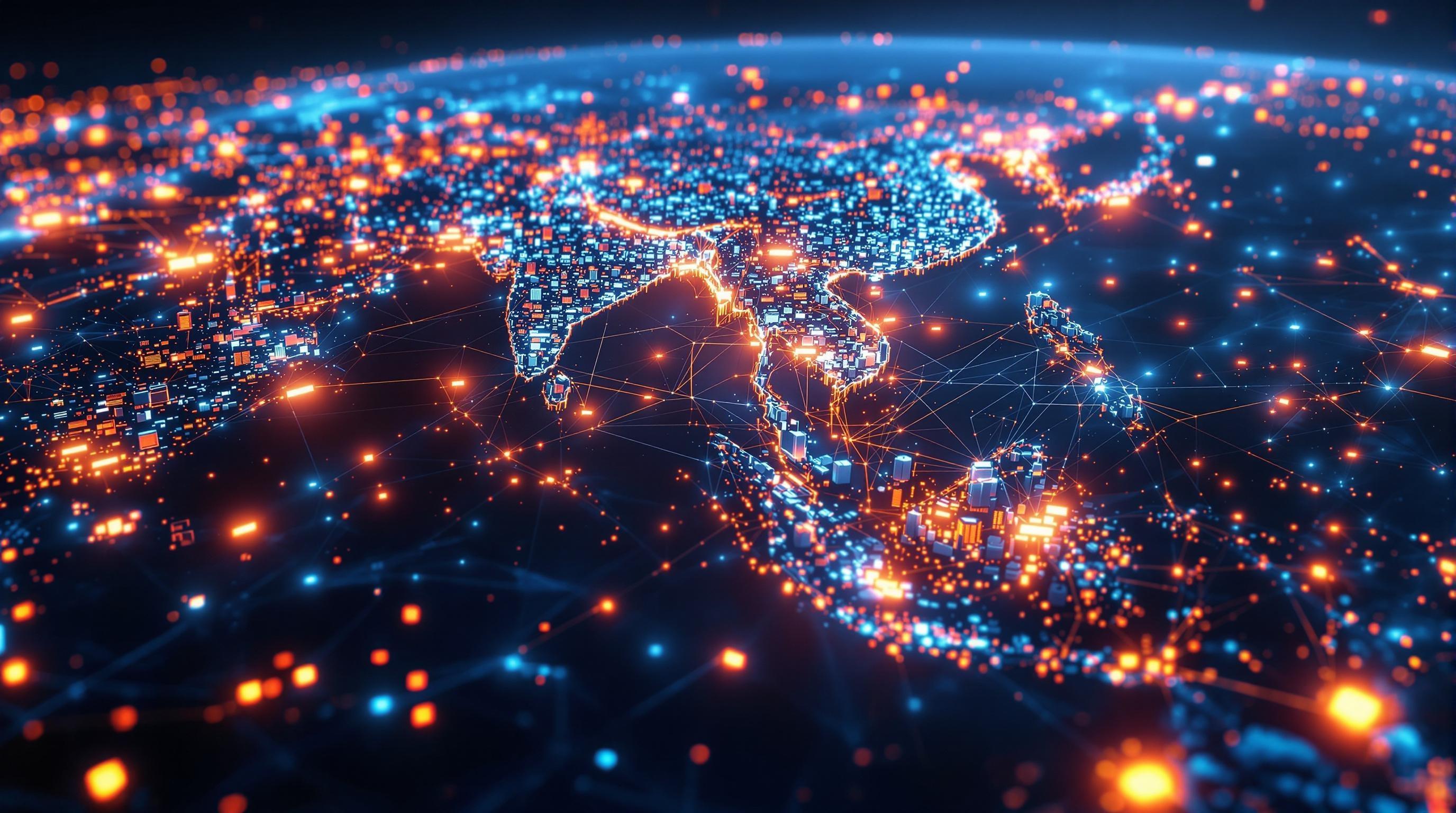
Asia-Pacific Ascends: Becoming the World's AI Infrastructure Powerhouse
While the AI revolution rages on, a quieter, but equally significant shift is happening beneath the surface: Asia-Pacific is rapidly becoming the world's AI infrastructure powerhouse. This isn't just about hype; it's about hard numbers, manufacturing prowess, and a shifting geopolitical landscape.
The Rise of APAC Data Centers
Forget Silicon Valley; the future of AI infrastructure is increasingly being built in Asia. The numbers don't lie: a significant percentage of all newly certified AI data centers are located in the Asia-Pacific region. Furthermore, a substantial number of members of the Open Compute Project (OCP), which drives open-source hardware innovation for data centers, hail from APAC countries. This demonstrates a commitment to not just using AI, but also building the very foundations upon which it runs. From South Korea's advanced semiconductor industry to Taiwan's dominance in hardware manufacturing, APAC is strategically positioned to lead the charge.
AI Infrastructure 2.0: The APAC Advantage
We're not just talking about traditional data centers anymore. The next wave, what some are calling "AI Infrastructure 2.0," involves whole-rack, unified compute platforms designed specifically for AI workloads. These are highly optimized systems that integrate processing, networking, and storage into a single, cohesive unit, maximizing efficiency and performance. And guess who's leading the way in developing and deploying these cutting-edge systems? You guessed it: Asia-Pacific. The region's ability to rapidly prototype, manufacture, and scale these advanced infrastructures gives it a significant edge in the global AI race.
Manufacturing Muscle: The Backbone of Global AI
It's easy to get caught up in the software side of AI – the algorithms, the models, the applications. But let's not forget the physical reality: AI runs on hardware. And for the most part, that hardware is manufactured in Asia. From semiconductors to servers, APAC's manufacturing strength forms the very backbone of global AI capacity. This concentration of manufacturing expertise provides a distinct advantage in terms of cost, speed, and control over the AI supply chain. Consider the role of companies like TSMC (Taiwan Semiconductor Manufacturing Company), which produces chips for AI powerhouses around the world. Without their manufacturing capabilities, the AI revolution simply wouldn't be possible.
A Shifting Geopolitical Landscape
The rise of APAC as an AI infrastructure powerhouse has profound geopolitical implications. It signifies a shift in the global technology power balance. Countries in the region are not just consumers of AI technology; they are becoming key innovators and producers. This increased self-reliance in AI infrastructure could reshape international relations, trade agreements, and even military strategies. This is why understanding the trends in AI News is crucial to staying informed about the global impact of these technological shifts.
The concentration of AI infrastructure in Asia-Pacific isn't just a technological trend; it's a geopolitical game-changer.
The rise of Asia-Pacific as an AI infrastructure hub is a trend that will only accelerate in the coming years. As AI continues to transform every aspect of our lives, the region's manufacturing might and its increasing focus on data center innovation will position it as a critical player in the global AI ecosystem. Now, let's consider the potential impact of Prompt Engineering on AI model performance and bias mitigation.
Google's 'Gemini Drops': Continuous Innovation in the Consumer AI Arena
The AI world never sleeps, and Google is determined to stay ahead of the curve with its continuous innovation in the consumer AI arena, most recently demonstrated by their commitment to regular 'Gemini Drops.'
Google's Gemini Drops: A Monthly Dose of AI Innovation
Google isn't content to let its AI models gather dust. The tech giant has launched a monthly update program called 'Gemini Drops,' promising a steady stream of new features and improvements to its flagship AI model, Google Gemini. This proactive approach signals Google's intent to keep Gemini fresh, competitive, and deeply integrated into users' daily lives.
Veo 3, Wear OS, and Scheduled Actions
So, what's in these 'Gemini Drops'? The initial announcements include some exciting additions:
Veo 3 Video AI Integration: Imagine being able to generate high-quality video content directly from text prompts within Gemini. With Veo 3, Google is bringing cutting-edge video AI to the masses. This integration promises to be a game-changer for content creators and marketers alike.
Wear OS Integration: Taking AI to your wrist, Gemini is now integrated with Wear OS. This means you can access Gemini's capabilities directly from your smartwatch, whether you're asking for quick information, setting reminders, or controlling smart home devices. It's AI convenience on the go!
Scheduled Actions: This feature allows users to schedule tasks and actions through Gemini. Think of it as your AI-powered personal assistant, capable of handling everything from scheduling appointments to sending automated messages. It's all about streamlining your day and boosting productivity.
Upgraded Gemini 2.5 Pro
Beyond the flashy new features, Google is also focused on improving Gemini's core capabilities. The upgraded Gemini 2.5 Pro boasts enhanced reasoning, coding, and creative abilities. This means more accurate responses, more efficient code generation, and more imaginative content creation. It's a significant step forward in terms of AI performance.
Staying Competitive Through Regular Rollouts
In the fast-paced world of AI, stagnation is a death sentence. Google's 'Gemini Drops' initiative is a clear strategy to stay competitive by consistently delivering new value to users. This regular cadence of feature rollouts allows Google to quickly respond to user feedback, incorporate the latest AI advancements, and maintain its position as a leader in the field.
By committing to monthly updates, Google is signaling that it views AI as a dynamic and evolving technology, not a static product.
Driving Everyday Adoption of Gemini
Ultimately, the goal of 'Gemini Drops' is to drive the everyday adoption of Gemini. By making the AI model more accessible, more versatile, and more useful, Google hopes to seamlessly integrate it into the lives of millions of users. Whether it's generating videos, managing schedules, or answering questions on the go, Google wants Gemini to be an indispensable tool for everyone. As AI becomes more pervasive, this consumer-focused approach to Gemini will be critical for adoption, especially given that other companies such as Meta are investing heavily in AI tools, as seen in the AI News and AI at Meta.
Google's 'Gemini Drops' represent a significant shift towards continuous innovation in the consumer AI space. By delivering regular updates and new features, Google is not only keeping Gemini competitive but also driving the everyday adoption of AI. As Google continues to push the boundaries of what's possible with AI, we can expect even more exciting developments in the months to come. The race for AI dominance is certainly heating up, and Google is determined to stay in the lead. However, one of Google's biggest competitors, OpenAI, is also working on exciting new tools, such as ChatGPT, a versatile AI chatbot that has already become a household name, setting a high bar for other AI developers.
Anthropic's Aggressive Pricing: Poised to Become a Key Player in Government AI
The AI landscape is about to get a major shakeup, and Anthropic is positioning itself right in the middle of it.
Anthropic's $1 Offering to US Agencies
In a move that has the entire industry buzzing, Anthropic is offering its powerful Claude AI to US government agencies for the incredibly low price of just $1. Yes, you read that right. This isn't a typo, and it's not a limited-time offer; it's a strategic play to become a major player in the government AI space. This incredibly low barrier to entry makes it easy for agencies to experiment with and implement AI solutions, potentially streamlining operations and improving public services. Imagine the possibilities: AI-powered tools assisting with everything from fraud detection to disaster response, all for the cost of a cup of coffee. This also poses a significant challenge to companies like Google Cloud AI and Azure Machine Learning, who will need to demonstrate significant value to justify their higher pricing. This bold move demonstrates a commitment to democratizing AI access within the government sector.
Claude Opus 4.1: A Step Up in Capabilities
Anthropic isn't just relying on aggressive pricing, they're also delivering serious upgrades to their core technology. The release of Claude Opus 4.1 showcases significant enhancements, specifically in coding, reasoning, and security features.
Coding Prowess: Claude Opus 4.1 can now write and debug code with greater accuracy and efficiency, making it a valuable asset for government IT departments and software development projects. Think of it as having an AI-powered coding assistant that can handle complex tasks and accelerate development cycles.
Reasoning Abilities: Improved reasoning capabilities mean Claude can analyze complex data sets, identify patterns, and provide actionable insights for policymakers and decision-makers. This is crucial for tackling complex challenges like public health crises, economic forecasting, and national security threats.
Enhanced Security: Security is paramount for government applications, and Claude Opus 4.1 incorporates advanced security measures to protect sensitive data and prevent unauthorized access. This is especially critical in areas like cybersecurity, intelligence gathering, and law enforcement.
A Strategy to Win Government Clients
Anthropic's cut-price strategy isn't just about altruism; it's a calculated move to gain a foothold in the lucrative government AI market. By offering its services at such a low cost, Anthropic hopes to attract a large number of government clients, establish itself as a trusted provider, and build long-term relationships. It’s like offering a free sample that leads to a lifetime subscription. The logic is clear: get the foot in the door, demonstrate value, and become indispensable.
The Future: A Leading Federal AI Provider?
With its compelling combination of aggressive pricing and advanced technology, Anthropic has the potential to become a leading AI provider for the federal government. If successful, this could transform the way government agencies operate, leading to greater efficiency, improved services, and better outcomes for citizens. Consider how AI tools have grown, and where AI might be in the future. You can stay abreast of AI News.
Shaping Government AI Policy
Beyond simply providing AI solutions, Anthropic's growing presence in the government space could also influence AI policy. As a key player, Anthropic will likely have a seat at the table when it comes to shaping regulations, standards, and ethical guidelines for AI development and deployment. This influence could have far-reaching consequences, shaping the future of AI in government and beyond. The move signals a larger shift towards the integration of AI into the public sector, potentially setting a new standard for how governments leverage technology to serve their citizens. It's a bold gamble, but one that could pay off handsomely for Anthropic and reshape the future of government AI.
🎧 Listen to the Podcast
Hear us discuss this topic in more detail on our latest podcast episode: https://creators.spotify.com/pod/profile/bestaitools/episodes/International-AI-Press-Digest--August-8--2025-GPT-5-Debuts--AI-Job-Displacement-Surge-What-August-8--2025-Means-for-the-AI-Revolution-e36jpjj
Keywords: GPT-5, Artificial Intelligence, AI, Microsoft AI, AI Job Displacement, AI Infrastructure, NTT Multi-Agent AI, Google Gemini, Anthropic Claude, OpenAI, Microsoft Copilot, AI in APAC, AI Adoption, AI Agents
Hashtags: #AI #ArtificialIntelligence #GPT5 #MachineLearning #TechNews
For more AI insights and tool reviews, visit our website https://best-ai-tools.org, and follow us on our social media channels!
Website: https://best-ai-tools.org
X (Twitter): https://x.com/bitautor36935
Instagram: https://www.instagram.com/bestaitoolsorg
Telegram: https://t.me/BestAIToolsCommunity
Medium: https://medium.com/@bitautor.de
Spotify: https://creators.spotify.com/pod/profile/bestaitools
Facebook: https://www.facebook.com/profile.php?id=61577063078524
YouTube: https://www.youtube.com/@BitAutor
Recommended AI tools
Sora
Video Generation
Create stunning, realistic videos and audio from text, images, or video—remix and collaborate with Sora, OpenAI’s advanced generative video app.
Perplexity
Search & Discovery
Clear answers from reliable sources, powered by AI.
DeepSeek
Conversational AI
Efficient open-weight AI models for advanced reasoning and research
Freepik AI Image Generator
Image Generation
Generate on-brand AI images from text, sketches, or photos—fast, realistic, and ready for commercial use.
Windsurf (ex Codium)
Code Assistance
Tomorrow’s editor, today. The first agent-powered IDE built for developer flow.
Canva Magic Studio
Design
All the AI magic of Canva, in one place.
